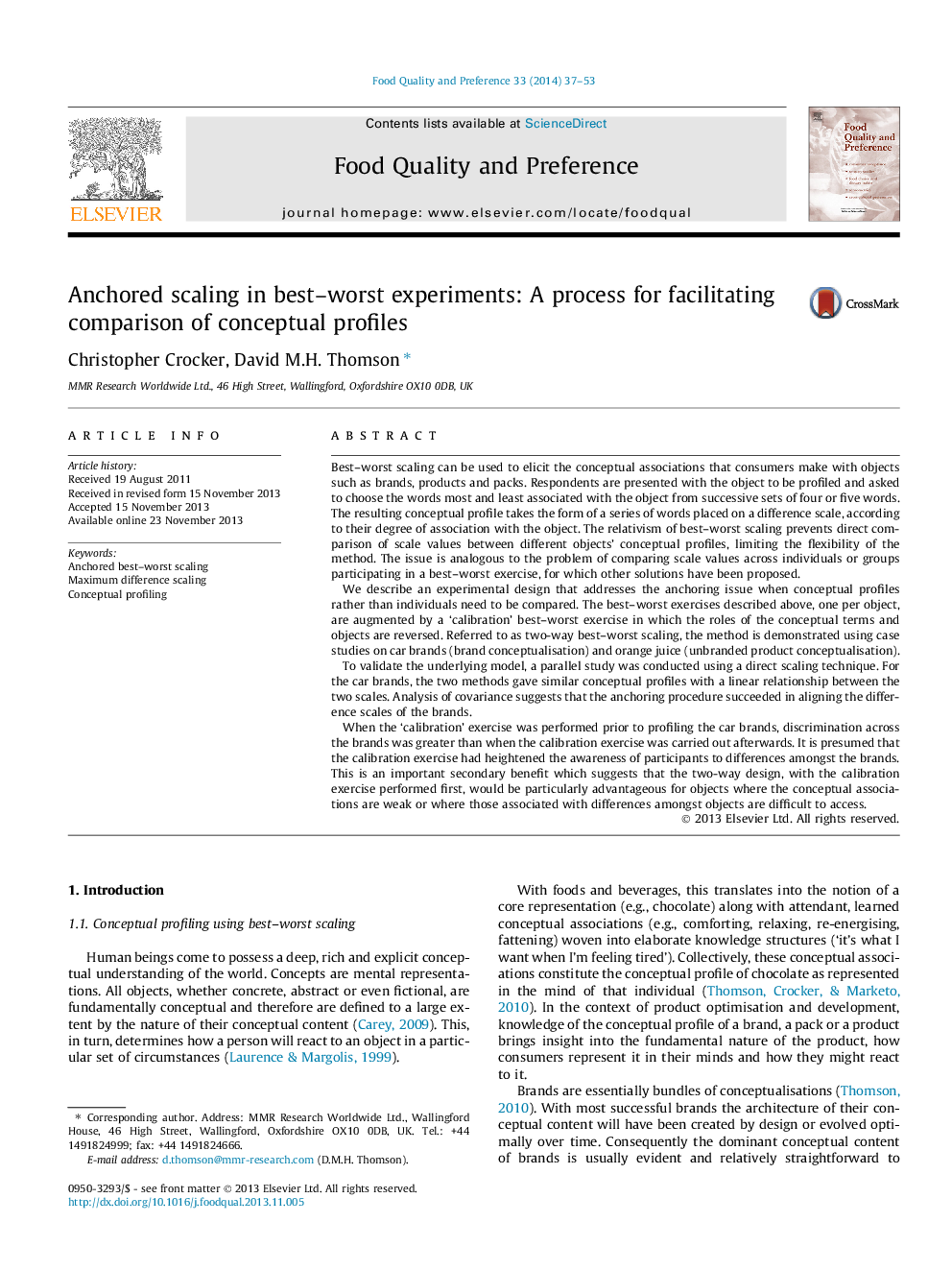| کد مقاله | کد نشریه | سال انتشار | مقاله انگلیسی | نسخه تمام متن |
|---|---|---|---|---|
| 4317129 | 1613164 | 2014 | 17 صفحه PDF | دانلود رایگان |
• Methodological development of best–worst scaling designs for conceptual profiling.
• Conceptual profiles of different objects measured on common difference scale.
• Demonstrated by case studies on car brands and unbranded orange juice.
• Validated by comparison with a direct scaling method.
Best–worst scaling can be used to elicit the conceptual associations that consumers make with objects such as brands, products and packs. Respondents are presented with the object to be profiled and asked to choose the words most and least associated with the object from successive sets of four or five words. The resulting conceptual profile takes the form of a series of words placed on a difference scale, according to their degree of association with the object. The relativism of best–worst scaling prevents direct comparison of scale values between different objects’ conceptual profiles, limiting the flexibility of the method. The issue is analogous to the problem of comparing scale values across individuals or groups participating in a best–worst exercise, for which other solutions have been proposed.We describe an experimental design that addresses the anchoring issue when conceptual profiles rather than individuals need to be compared. The best–worst exercises described above, one per object, are augmented by a ‘calibration’ best–worst exercise in which the roles of the conceptual terms and objects are reversed. Referred to as two-way best–worst scaling, the method is demonstrated using case studies on car brands (brand conceptualisation) and orange juice (unbranded product conceptualisation).To validate the underlying model, a parallel study was conducted using a direct scaling technique. For the car brands, the two methods gave similar conceptual profiles with a linear relationship between the two scales. Analysis of covariance suggests that the anchoring procedure succeeded in aligning the difference scales of the brands.When the ‘calibration’ exercise was performed prior to profiling the car brands, discrimination across the brands was greater than when the calibration exercise was carried out afterwards. It is presumed that the calibration exercise had heightened the awareness of participants to differences amongst the brands. This is an important secondary benefit which suggests that the two-way design, with the calibration exercise performed first, would be particularly advantageous for objects where the conceptual associations are weak or where those associated with differences amongst objects are difficult to access.
Journal: Food Quality and Preference - Volume 33, April 2014, Pages 37–53
